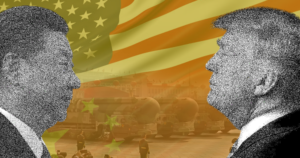by: The Washington Eye
The rapid integration of artificial intelligence (AI) into various sectors of the U.S. economy has ignited significant concern among labor unions. As AI technologies increasingly perform tasks traditionally done by humans, unions are advocating for protective measures to safeguard workers’ rights and job security. The fear is not unfounded; projections suggest that AI could eliminate up to 50% of entry-level white-collar jobs within five years, potentially raising U.S. unemployment to 20% by 2030.
Legislative Efforts and Union Advocacy
In response to the growing influence of AI in the workplace, labor unions are pushing for legislative reforms. The AFL-CIO emphasizes the need for policies that ensure AI benefits workers and does not undermine labor rights. Additionally, the Protecting the Right to Organize (PRO) Act aims to strengthen workers’ rights to unionize and collectively bargain, which is crucial in the context of AI-driven workplace changes.
However, these efforts face significant political obstacles. For instance, California’s governor has twice vetoed bills that would ban autonomous trucks from public roads, despite intense lobbying from the state’s hundreds of thousands of union members. Similar battles are playing out in other states, highlighting the challenges unions face in enacting protective legislation.
How Various Industries are Being Impacted
AI’s impact is evident across multiple sectors. For instance, the International Longshoremen’s Association (ILA) has expressed concerns over automation at ports, fearing job losses due to AI-controlled machinery. Similarly, the Screen Actors Guild‐American Federation of Television and Radio Artists (SAG-AFTRA) initiated a strike in 2024 over the use of AI in replicating actors’ voices and likenesses without consent.
Moreover, the retail sector, employing more than a quarter of all U.S. workers, is experiencing a transformation into an AI-powered environment. In this new landscape, innocuous behavior can be criminalized, safety can be weaponized, and the ability to exercise one’s legally protected right to organize a union can be endangered.
Surveillance and Worker Autonomy
Beyond job displacement, unions are also addressing the increased surveillance capabilities enabled by AI. Retailers and other employers are deploying AI tools for monitoring employee behavior, raising concerns about privacy and autonomy in the workplace. Such surveillance can create a stressful working environment, reducing overall job satisfaction and increasing anxiety among employees.
In response, unions are advocating for transparency in AI implementation and legal safeguards to defend employee rights. They are pushing for a more inclusive dialogue that ensures workers have a voice in how AI is integrated, emphasizing the need for responsible and ethical AI adoption that does not sideline human labor.
A Final Note
As AI continues to reshape the labor landscape, U.S. unions are actively seeking protections to ensure that technological advancements do not come at the expense of workers’ rights and livelihoods. Through legislative advocacy and collective bargaining, unions aim to navigate the challenges posed by automation and secure a future where both innovation and labor can thrive.














